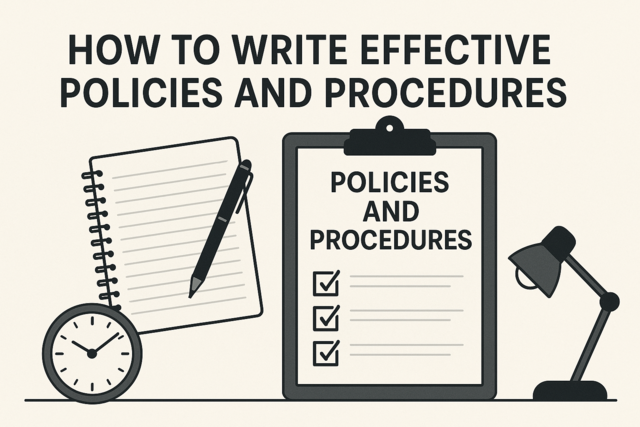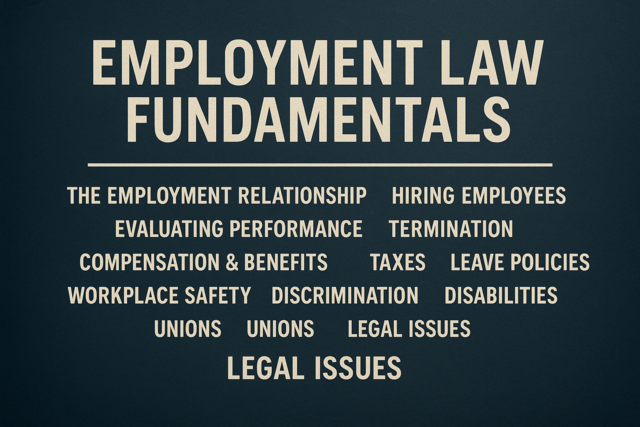Misrepresentation is a false statement of fact that is used to induce a party into a contract. A false statement can be about a party, a performance, an outcome, or, in the case of merchant sales, a product. The statement can be made prior to or during a contract's execution. Statements of opinion or intent are generally not subject to misrepresentation charges because it is difficult to determine a lawful foundation on which the statement is made; therefore, the statement would not be considered a statement of fact. However, if the party issuing the statement has expertise or professional experience pertaining to the subject matter, an opinion could be considered a statement of fact. For a statement to be considered a misrepresentation, it must be proven that:
- A false statement was made.
- The statement was directed to the offended party.
- The statement induced the offended party to act.
A misrepresentation may or may not be included as a contract term, such as a warranty or condition, or could be made as part of a consideration or may be made as a promise to perform. If a term meets the criteria for misrepresentation, then remedies can be sought under a breach of contract action (discussed later). If a statement is determined to be false, remedies can include damages or rescission by the offended party. The criteria used to determine if a statement is misrepresentative are as follows.
A statement must be expressed or implied such that substantive facts do not support the claim made in order for misrepresentation to occur. Though parties are required to act in a good faith effort, they are not required to disclose all facts known (unless the fact could potentially harm the other party); this is acknowledged in commercial trade by the expression caveat emptor or "let the buyer beware." Silence (sometimes called omission) usually is not grounds for misrepresentation, except in certain contracts. However, any claims that are discussed or implied must be grounded in factual material to be considered valid.
A false statement can arise from three scenarios: a distortion of fact, where the claim itself may be true but the party fails to include information that could alter the understanding of the claim; learned falsity, where a fact is either later determined to be false or conditions change which render the claim false; and special relationships, such as fiduciary relationships (built upon inherent trust between the parties) or contracts uberrimae fidei (where one party has exclusive access to facts that the other doesn't have).
2. Is the claim a statement of fact?
The statement must be about a present or past fact, one that the representor must have known at the time was true or untrue. Opinions based on personal belief are usually not considered statements of fact, unless the opinion is founded upon specialized knowledge about the subject matter. Intention or future expectations are also usually not considered misrepresentations. Statements about law cannot be claimed to be misrepresentative because it is expected that all parties should know the laws pertaining to the contract's subject matter.
Only the party to whom the claim was intended to be made can seek remedies from misrepresentation. The statement does not have to be made directly to the party filing a misrepresentation action; however, that person must be legally connected to the offended party.
Only cases where the offended party can show the claim motivated them to act, may be determined as misrepresentation offenses. Being unaware of the representation, or proceeding by ignoring known facts, is not an adequate position when filing misrepresentation charges.
Under U.S. law, there are a few ways in which misrepresentation takes place. By using fraudulent statements that the representor knows are false and are used with the intent to deceive. By making statements in a negligent or reckless fashion, having no reasonable basis to believe they are true. Finally, by claiming that facts were based upon a reasonable expectation that the statement is true, the offending party displays innocent negligence. If the offended party is also shown to have used a reasonable basis in believing that the facts were true, they have acted with contributory negligence.
Fraud is an intentional action to deceive. This contractual violation is typically enforced under civil or criminal law, depending on the jurisdiction. Parties who commit fraud are attempting to gain something through falsification or deception. Fraud is most often committed by making a false representation, which can be carried out by
- Making a false statement of fact, knowing the statement is false at the time it is made.
- Making a false statement with no reasonable basis for making the statement.
- Making a false promise that, at the time it was made, the party had no intention to complete.
- Making a statement of opinion based on a false statement of fact.
- Making a statement of opinion the representor knows is false.
- Offering an opinion that is false, based upon specialized knowledge the other party has no access to.
Contract fraud, unlike misrepresentation, is always considered intentional, and that the offended party is injured in some way. This violation may include withholding (omission) or intentional failure to state material facts that, as a result, would make other statements not misleading. A fraudulent act or statement must relate to a material fact in the contract, not an inconsequential point. Forgery is a form of fraud. Simply making false promises to induce another party to act is not typically considered fraud (see Misrepresentation). However, to be considered a fraudulent act, the injured party must be able to show that he relied on the statement as a matter of process in completing the contract. Also, an injured party must show that, without the fraudulent activity, the contract would either never have been entered into nor would it have been completed fairly.
A contract that is so grossly unfair to one party that no man "in good conscience" would enter into it, is termed an unconscionable agreement. The contract will likely be unenforceable or, at the very least, will still be valid except for the unconscionable element. Typically enforced under the UCC, the unconscionability rule addresses parties who have a superior bargaining power over the other parties. An offended party must show that there was unfairness in the substance of the agreement or the process by which the contract was executed.
A contract of adhesion is one which is unbalanced in favor of one party, but not unconscionable. Usually created by a party wishing to take advantage of others, this type contains a take-it-or-leave-it style offer. The contract is a boilerplate version that stacks the deck against the weaker party, and leaves no negotiation ability. The practice of using adhesion contracts occurs most frequently between merchants and buyers. Though still enforceable, U.S. courts may review all the terms and remove unenforceable conditions if complaints are made.
As you can see, there are several ways in which a contract can be created with less than honorable intentions. Additionally, there are circumstances when a contract is entered into under conditions that can negate the validity of portions of an agreement or an entire contract.
If a contract is challenged, the intermediary (court, arbitrator, or others) will look at factors that may have given one party an unfair advantage. From bargaining power to the conditions when an agreement is made, there can be several circumstances that can excuse a contractor from one part or the entire contract. Excluding liability or an offeree's rights are examples of unfair conditions or terms that can invalidate clauses included in the contract.
Under common law, duress is the condition that places one party under a threat of harm or loss to himself or a contracted good which forcefully compels him to show assent to the agreement. Duress, if proven to exist, can void a contract, allowing the offended party to escape obligation. There are three forms of duress recognized by U.S. law
1. Physical duress. An expressed or implied statement that can place a party in physical harm (or death), false imprisonment, or another risk of detriment to his being if the party doesn't show assent. This type of duress is rare. "Your money or your life," is an example of physical duress.
2. Duress of goods. A party illegitimately withholds delivery of goods until assent is given. This withholding puts the other party at risk of loss. Some instances are justifiable, such as not releasing a repaired vehicle until a consumer pays the bill.
3. Economic duress. A financial loss can result by not assenting to a contract. Pressure is exerted by withholding compensation or other forms of payment. Sometimes used to coerce a party to signing additional contracts, economic duress can sometimes be challenging to prove. In order for an offended party to prove unfair pressure, he must show:
� Improper threats. These are moral, criminal, or tortuous (harmful) statements.
� Lack of reasonable alternative. No available market substitute existed at the time of agreement.
� Threat induced assent. The offended party would have suffered significant loss by not showing assent.
� Offending party delivered the threat. The statement must come from the offending party
Duress can be sometimes difficult to prove, as there are many situations where strong bargaining tactics are used in order to execute a contract. However, tactics must be morally, criminally, and socially fair in order to avoid a charge of duress.
When a contracting party is pressured, either positively or negatively, to grant assent to an agreement, they can charge the offending party with undue influence. Though not as forceful as duress, undue influence also shows a lack of bargaining power from one party. Deception, flattery, exhorting, and insinuation are all forms of this pressure tactic. Most often, it is used on vulnerable parties such as a protected individual or a dependent person. There are two fundamental forms of undue pressure
� Actual undue influence is shown by evidence of an unfair relationship. The offended party must show that power over him was expressed or implied by another. In cases such as wills or medical decisions, patients may be placed under undue influence by doctors, family members, or friends.
� Presumed undue influence occurs when a relationship is commonly accepted as unbalanced. Parent/child, pastor/parishioner, and doctor/patient are examples of these relationships. There can also be presumed undue influence when one party can legitimately assume an obligation under contract that can be fulfilled by a third party because of their relationship to the signatory party. For example, in some states a lender may presume that a wife will cover a debt on behalf of her husband.
There are four criteria that show evidence of undue influence. First, a party must be susceptible to the influence. Second, there must be the opportunity to use that influence, such as in confidential, close relationships like a guardian and ward, or benefactor and beneficiary. Third, there must be evidence that the wronged party was influenced by the influencer. Finally, there must have been an unnatural or an unusual event taking place like a last-minute change to a contract.
The fine print that follows the major provisions can hide terms and conditions that many contracting parties overlook. Adhesion contracts are sometimes so lengthy that a party chooses to not review the entire agreement. Or the legal jargon used is confusing and obscure. Within a contract there can be limiting terms that are deemed unfair under U.S. law even if agreed to at the time of signing. Most unfair terms can be found in the clauses of a contract, and may be challenged under the UCC or common law. A condition that could be considered allowable in most cases becomes unfair because of the language used within the clause. Some normally acceptable clauses that may be deemed unfair due to their language include
- Liability Disclaimers. Clauses excluding or limiting liability for substantial damages (personal injury or death), potentially hazardous or dangerous activities, certain delays or poor work or materials. Also, a clause limiting the level or type of liability may not be valid.
- Restrictions and Exclusions. Clauses that restrict or prohibit a party's rights to make a claim or to access remedies, or unreasonably limits timeframes for claims.
- Waiver. Clauses that ask a party to waive important rights or legal recourse in the event of wrongdoing.
- Assignment. Clauses that unfairly assign a party's obligation to perform to a third party.
- Cancellation Provisions. Clauses that exhibit unequal contract cancellation rights or termination without notice or make termination subject to unreasonable conditions.
- Penalties. Clauses that impose unfair penalties or cause substantial commercial or personal loss. Additionally, an unreasonable liquidated damages clause may not be enforceable.
- Indemnification. Clauses that disproportionately compensate one party when one party suffers loss.
- Non-competition Clauses. Typically in employment contracts, these are clauses that unfairly limit choices following cancellation or completion of the contract.























